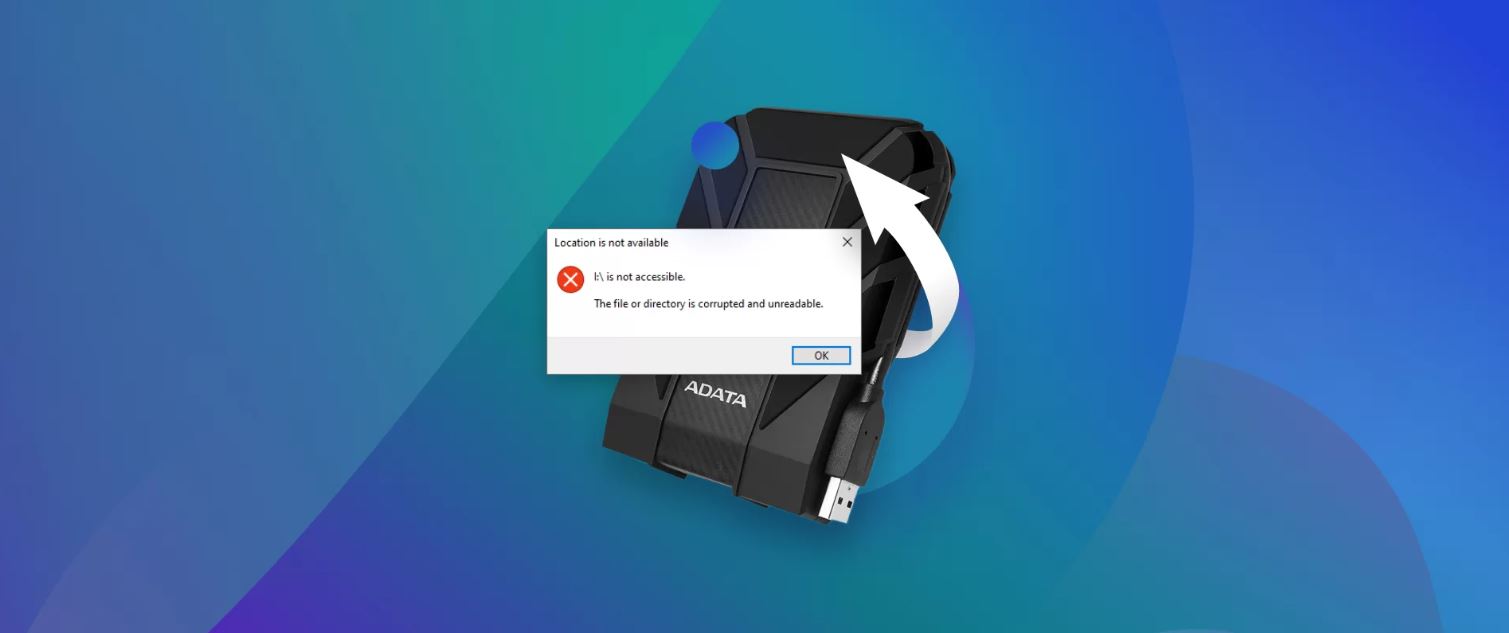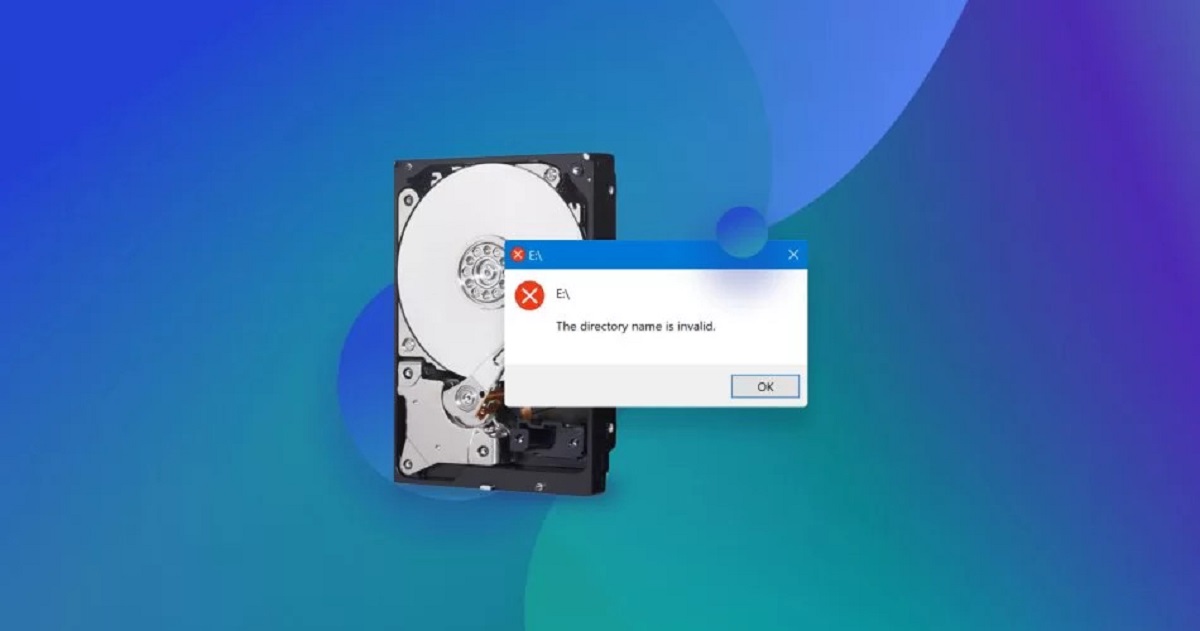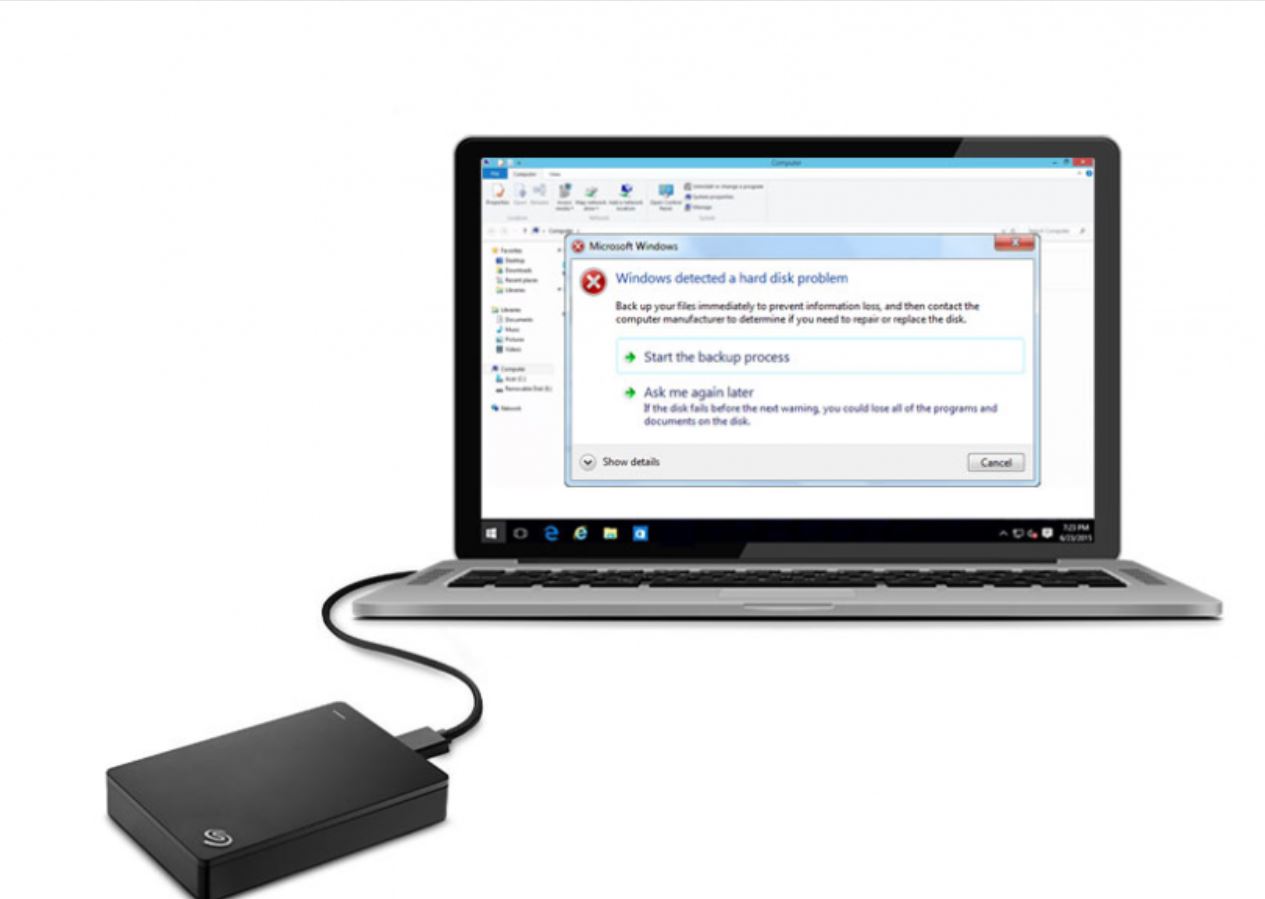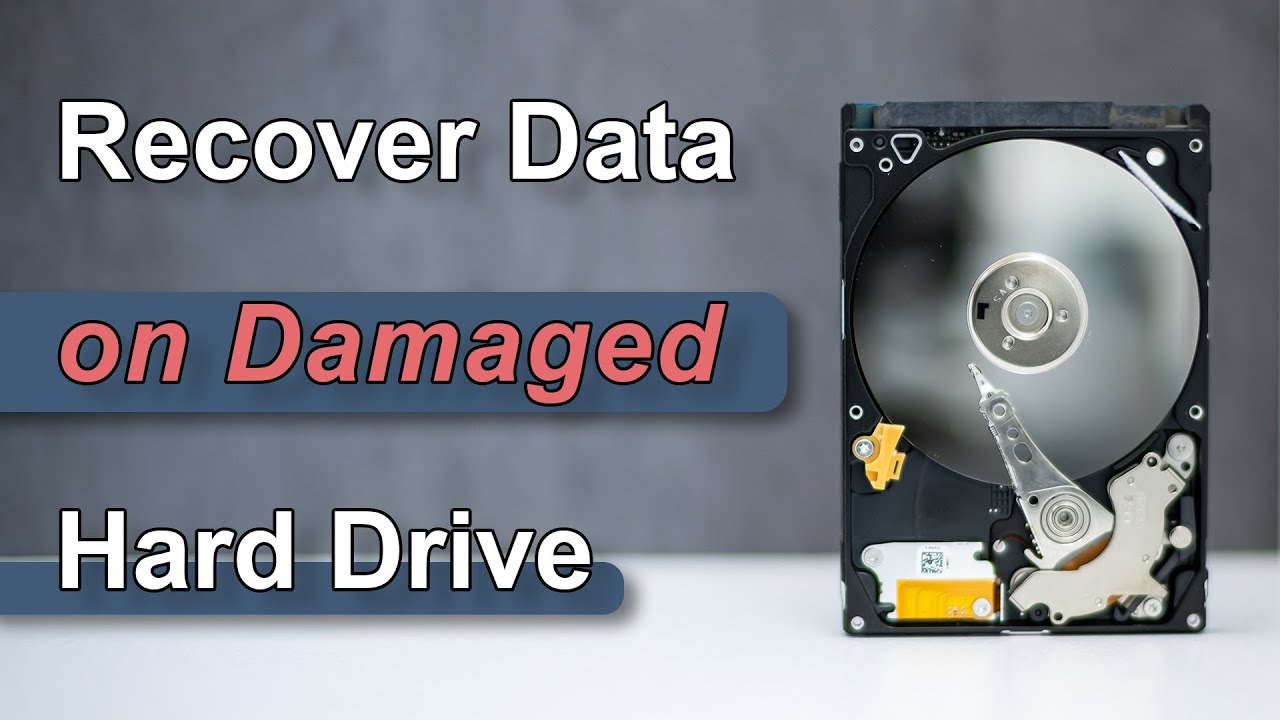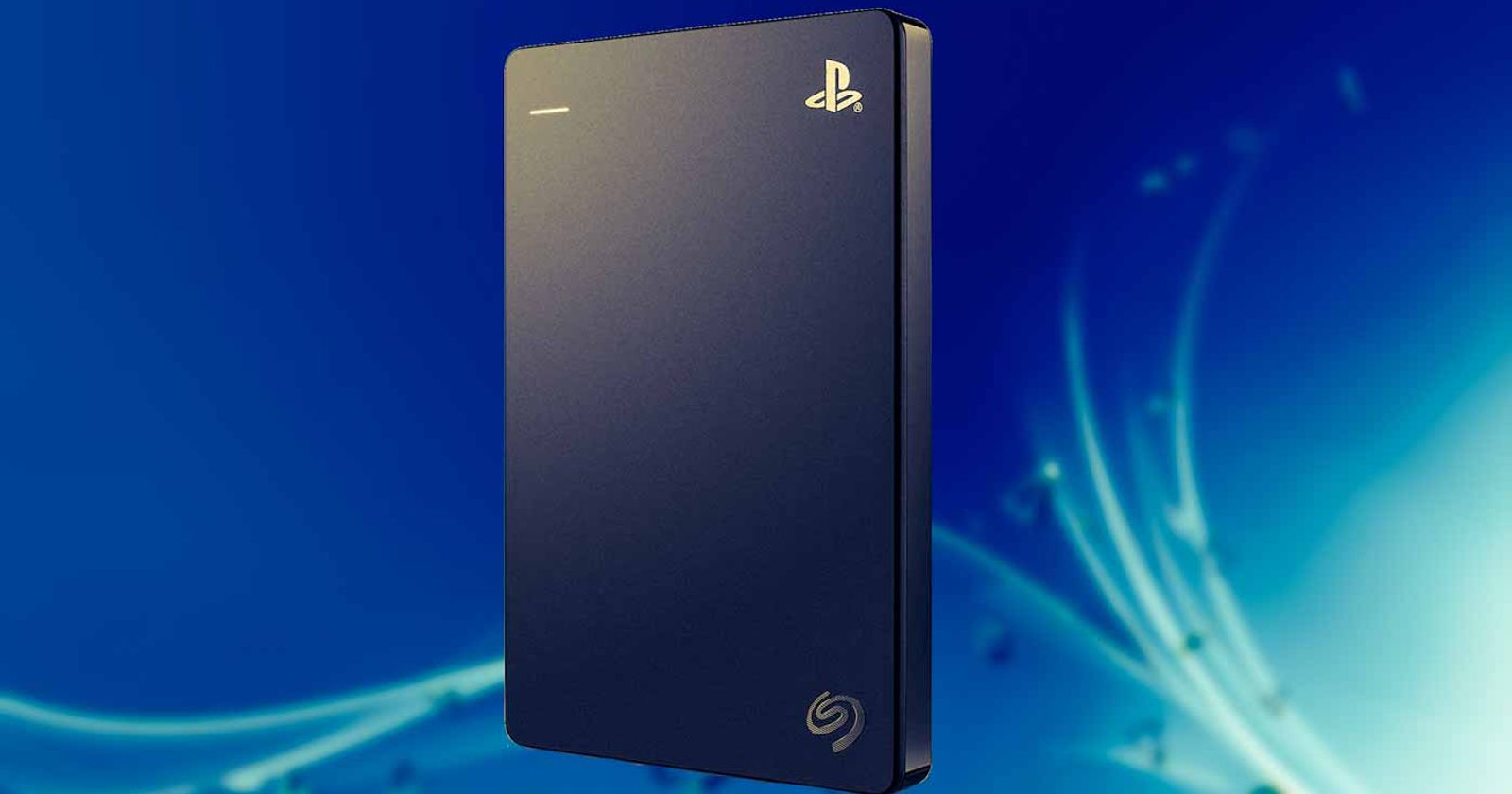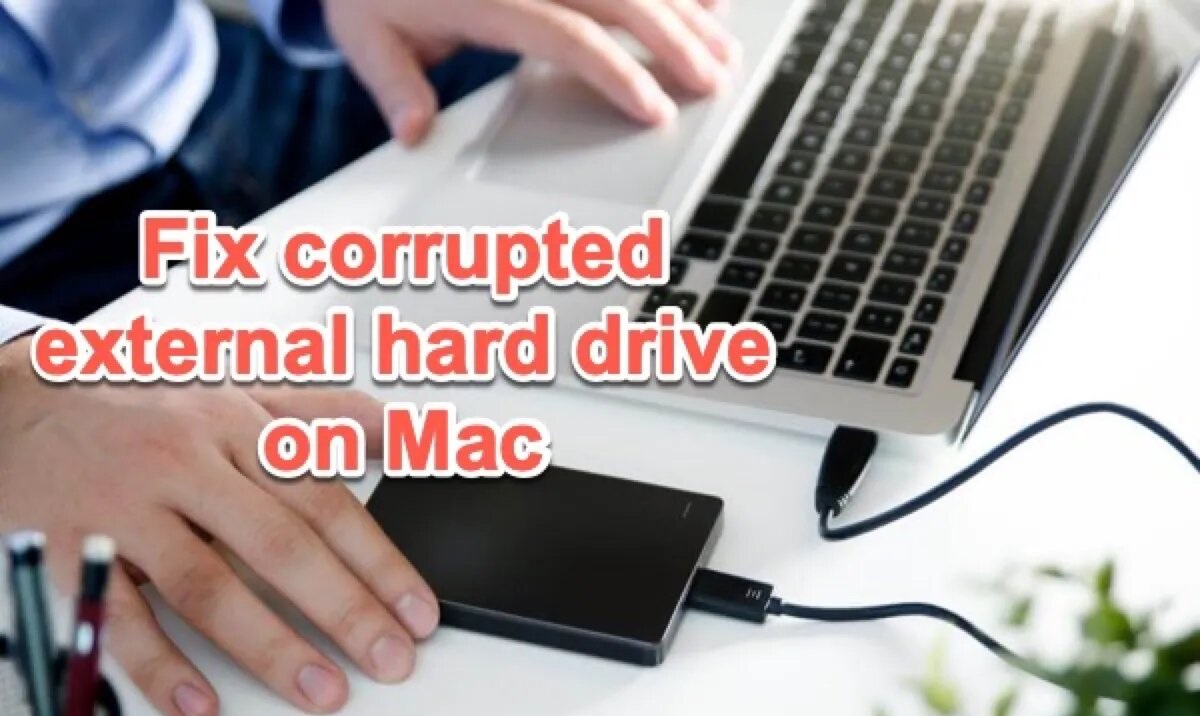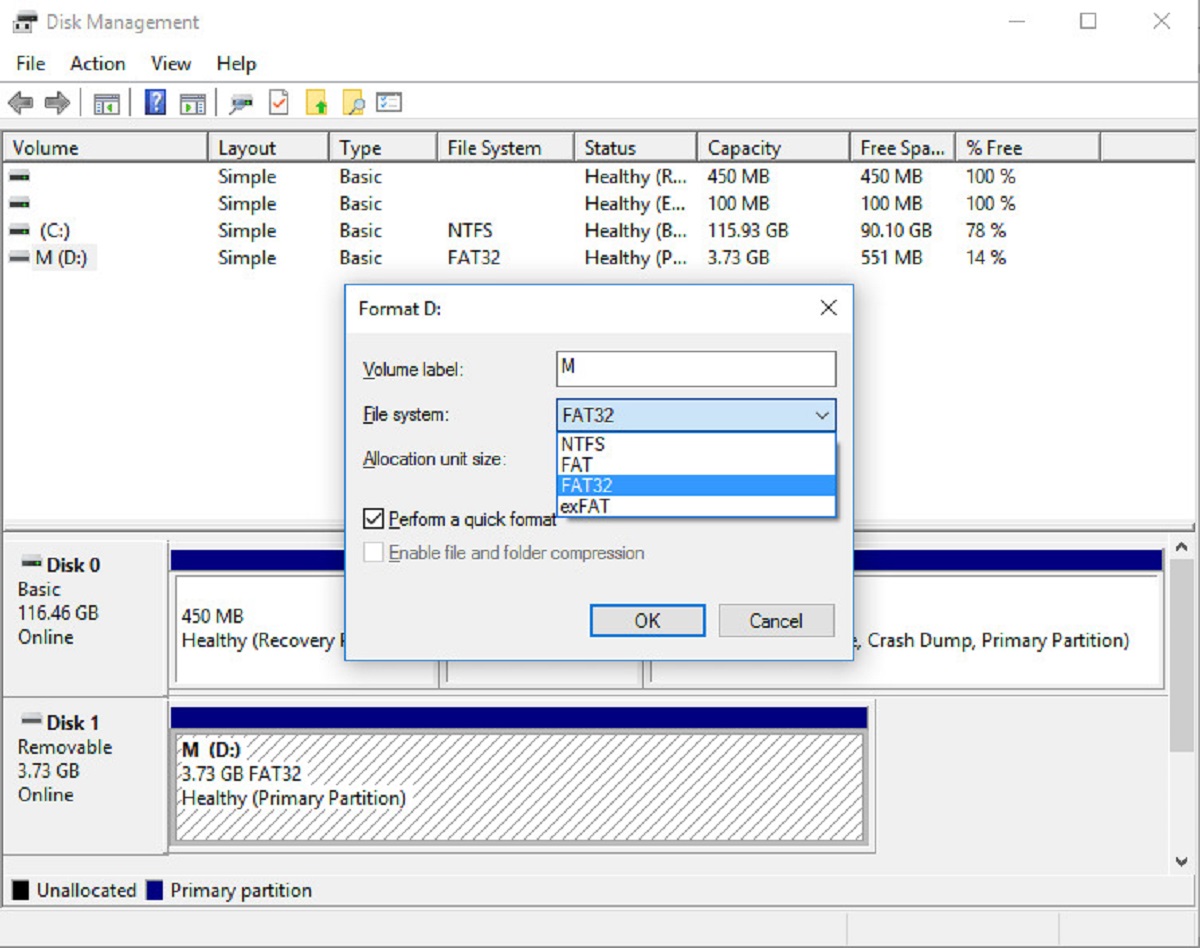Introduction
An external hard drive is a convenient and portable storage device that allows you to store and back up your important files and data. However, there may come a time when your external hard drive becomes corrupted, making it inaccessible and potentially causing data loss. This can be a frustrating experience, especially if you have valuable files stored on the drive.
In this article, we will discuss common signs of a corrupted external hard drive and provide you with some tips and solutions on how to fix it. Whether it’s a logical issue or a physical problem, there are steps you can take to potentially recover your data and get your external hard drive working again.
It’s important to note that the methods outlined in this article are general suggestions and may not work in every situation. If you have valuable or irreplaceable data on your external hard drive, it is recommended to seek professional assistance from data recovery specialists.
Now, let’s explore the signs of a corrupted external hard drive and learn how to troubleshoot the issue.
Common Signs of a Corrupted External Hard Drive
A corrupted external hard drive may exhibit a range of symptoms, indicating that there is a problem with the drive’s functionality. By recognizing these signs, you can take the necessary steps to address the issue and potentially prevent further data loss. Here are some common signs to look out for:
- Unrecognized or inaccessible drive: One of the first indications of a corrupted external hard drive is when your computer fails to recognize the drive or if it becomes inaccessible. This can be seen when the drive does not appear in the “My Computer” or “This PC” section.
- Slow or sluggish performance: If you notice that the external hard drive is taking an unusually long time to respond or access files, it could be a sign of corruption. Sluggish performance might manifest as delayed file transfers, long loading times, or unresponsive behavior when interacting with the drive.
- Error messages: When a hard drive is corrupted, you may encounter various error messages when trying to access or use the drive. These error messages can range from “Drive needs to be formatted” to “File system error” or “Data cannot be read.” These messages serve as warnings that there is an issue with the drive.
- Strange noise or clicking sound: A corrupted external hard drive may produce unusual noises such as grinding, clicking, or buzzing sounds. These noises could indicate mechanical failure or damage to the drive’s internal components.
- Data loss or file corruption: The most concerning sign of a corrupted external hard drive is when you experience data loss or find that your files have been corrupted. This can occur when the system fails to read or write data properly due to drive corruption.
If you notice any of these signs, it is essential to take immediate action to prevent further damage and maximize your chances of recovering the data stored on the external hard drive. In the following sections, we will explore various troubleshooting methods that can help you fix a corrupted external hard drive. Remember to always proceed with caution and back up your data whenever possible.
Backup your Data
Before attempting any troubleshooting methods on a corrupted external hard drive, it is crucial to prioritize data backup. Data loss is a potential risk when dealing with a malfunctioning drive, and creating a backup ensures the protection of your valuable files. Here’s how you can backup your data:
- Copy files to another drive: If your external hard drive is still accessible, connect another storage device or an empty hard drive to your computer and manually copy your important files and folders. Simply drag and drop the files from the corrupted drive to the new destination.
- Use backup software: To streamline the backup process, consider using backup software that allows you to create a full system backup or selectively choose files and folders to back up. There are numerous free and paid options available, such as Acronis True Image, Macrium Reflect, or EaseUS Todo Backup.
- Cloud storage: Utilizing cloud storage services like Google Drive, Dropbox, or Microsoft OneDrive can be an effective way to backup your files. Upload your important data to the cloud, ensuring it is secure and accessible from anywhere with an internet connection.
- Offline backups: In addition to digital backups, consider creating offline backups by copying your files onto DVDs, Blu-rays, or external hard drives. Store these backups in a safe location away from your computer to protect against physical damage or theft.
Remember, the goal is to have at least one additional copy of your important data stored separately from the corrupted external hard drive. By implementing regular backup practices, you can minimize the potential impact of data loss and ensure that your files are protected. Once you have successfully backed up your data, you can proceed with troubleshooting methods to fix your corrupted external hard drive, which we will discuss in the following sections.
Check the Connections
Sometimes, a corrupted external hard drive can be a result of loose or faulty connections. Before diving into complex troubleshooting methods, it is advisable to start with the basics and ensure that the connections are properly established. Here’s what you can do:
- Check the USB cable: If you are using a USB connection for your external hard drive, inspect the cable for any signs of damage or wear. Try using a different USB cable to rule out any issues with the cable itself.
- Try different USB ports: Connect the external hard drive to different USB ports on your computer. Sometimes, a specific USB port may not be functioning correctly, causing issues with device recognition.
- Use a powered USB hub: If you are connecting multiple devices to your computer’s USB ports, the power supply may become insufficient. Using a powered USB hub can help provide enough power to the external hard drive and eliminate potential power-related issues.
- Test on another computer: Connect the external hard drive to another computer or laptop to determine if the issue persists. If the drive is recognized and functions properly on another computer, the problem may be specific to your system.
By checking the connections and ruling out any potential issues with the USB cable, ports, or power supply, you can ensure that the external hard drive is receiving a stable connection. If these basic troubleshooting steps do not resolve the problem, proceed with the following methods to further troubleshoot and fix a corrupted external hard drive.
Run Windows CHKDSK Utility
One of the built-in tools available in Windows for troubleshooting and fixing hard drive issues is the CHKDSK (Check Disk) utility. This utility scans the drive for errors and attempts to repair any issues it finds. Follow these steps to run CHKDSK on your corrupted external hard drive:
- Connect the external hard drive: Ensure that the corrupted external hard drive is connected to your computer.
- Open Command Prompt: Press the Windows key + R to open the Run dialog box. Type “cmd” and press Enter to open the Command Prompt.
- Run CHKDSK: In the Command Prompt window, type the following command and press Enter:
chkdsk /f [drive letter]:Replace “[drive letter]” with the drive letter assigned to the external hard drive (e.g., chkdsk /f D:). - Follow the prompts: CHKDSK will begin scanning the drive for errors and repairing them. Depending on the size of the drive and the extent of the corruption, this process may take some time. Follow any on-screen prompts if prompted.
- Review the results: Once CHKDSK completes its scan and repairs, it will display a summary of the results. Take note of any errors or issues that were identified and fixed.
Running CHKDSK can help identify and resolve common file system or logical issues that may be causing the external hard drive to become corrupted. However, it’s important to note that CHKDSK is not a foolproof solution and may not be able to fix all types of drive corruption. If the issue persists after running CHKDSK, try the next troubleshooting method.
Use Third-Party Data Recovery Software
If the previous methods have not been successful in fixing the corrupted external hard drive or recovering your data, you can consider using third-party data recovery software. These specialized tools are designed to scan the drive, retrieve lost or damaged files, and potentially repair the drive’s file system. Here’s how you can utilize third-party data recovery software:
- Research and select a reliable software: There are various data recovery software options available in the market, such as EaseUS Data Recovery Wizard, Recuva, or Stellar Data Recovery. Do some research, read user reviews, and choose a reputable software that suits your needs.
- Install and launch the software: Once you have selected the software, download and install it on your computer. Launch the software and ensure that the corrupted external hard drive is connected to your system.
- Select the drive and scan for lost files: Within the data recovery software, select the corrupted external hard drive as the target drive for scanning. Choose the appropriate scan option: Quick Scan or Deep Scan. The software will then start scanning the drive for lost or damaged files.
- Preview and recover files: Once the scan is complete, the software will display a list of recoverable files. Preview the files to ensure their integrity and select the files you want to recover. Choose a safe location to save the recovered files, preferably on a different drive or storage device.
- Repair or format the drive: Some data recovery software also offers options to repair or format the drive after recovering the files. This can be helpful in cases where the file system is still corrupted even after recovering the data. Proceed with caution while using these options, as they may result in data loss if not executed properly.
Third-party data recovery software can be a powerful tool in retrieving your lost files and potentially fixing the corrupted external hard drive. However, it’s important to note that the success of data recovery depends on various factors such as the extent of corruption and the condition of the drive. As always, exercise caution and consider seeking professional assistance if your data is critically important or if the software-based solutions are not yielding satisfactory results.
Reformat the Drive
If all other methods have failed to fix the corrupted external hard drive or recover your data, reformatting the drive can be a last-resort solution. Reformatting involves erasing all the data on the drive and reinstalling the file system, essentially starting with a clean slate. Here’s what you need to do:
- Backup your data: Before proceeding with reformatting, ensure that you have already backed up any important files and data stored on the corrupted external hard drive. This step is crucial, as reformatting will erase all the data on the drive.
- Open Disk Management: In Windows, right-click on the “Start” button and select “Disk Management” from the context menu. This will open the Disk Management utility.
- Select the external hard drive: In the Disk Management window, locate the external hard drive from the list of available drives. Right-click on the drive and select “Format.”
- Choose the file system and formatting options: In the Format window, select the desired file system for the drive (e.g., NTFS, exFAT, or FAT32). You can also provide a new volume label for the drive. Review the formatting options and make any necessary adjustments.
- Confirm and initiate the format: Double-check that you have backed up your data, as reformatting will erase everything on the drive. Once you are ready, click on the “OK” or “Format” button to begin the formatting process.
- Wait for the format to complete: The reformatting process can take some time, depending on the size of the drive. Allow the process to complete uninterrupted and avoid disconnecting the drive during this time.
- Assign a drive letter: After formatting, the drive may not be automatically assigned a drive letter. To do this, right-click on the formatted drive in Disk Management and select “Change Drive Letter and Paths.” Choose an available drive letter and confirm the changes.
Reformatting the drive can help eliminate any lingering file system issues or corruption. However, it is important to note that reformatting will erase all the data on the drive, so ensure that you have backed up your important files before proceeding.
Seek Professional Help
If none of the previous methods have been successful in fixing your corrupted external hard drive or recovering your data, it may be time to seek professional assistance. Data recovery specialists have the expertise and tools necessary to handle complex drive issues and maximize the chances of data retrieval. Here are a few reasons why you might consider professional help:
- Advanced recovery techniques: Professional data recovery services have access to specialized hardware, software, and techniques that are not readily available to the average user. They can employ advanced methods to recover data from severely damaged or corrupted drives.
- Physical damage: If your external hard drive has suffered physical damage, such as a broken connector or internal component failure, it may require professional attention. Attempting to repair a physically damaged drive yourself can further exacerbate the problem.
- Guaranteed success: While no data recovery service can guarantee a 100% success rate, reputable professionals often offer a “no data, no fee” policy. This means that if they are unable to recover your data, you won’t have to pay for their services.
- Confidentiality and security: Data recovery professionals understand the importance of data privacy and take strict measures to ensure the confidentiality and security of your files. They follow industry standards and protocols to safeguard your sensitive information.
- Time and convenience: Data recovery can be a time-consuming and complex process. By seeking professional help, you can save yourself the hassle and frustration of attempting DIY methods that may not yield successful results.
When choosing a data recovery service, do thorough research, read reviews, and ensure that they have a track record of successful recoveries. Keep in mind that professional data recovery services can be costly, depending on the severity of the issue and the amount of data to be recovered. However, the potential value of your lost data may outweigh the expense.
If you decide to seek professional help, be sure to provide them with as much information as possible, including the steps you’ve taken, the symptoms you’ve observed, and any error messages you’ve encountered. This can aid them in diagnosing the problem accurately and determining the best course of action for your specific situation.
Conclusion
Dealing with a corrupted external hard drive can be a frustrating experience, but there are steps you can take to troubleshoot and potentially fix the issue. In this article, we discussed common signs of a corrupted external hard drive and provided various methods to address the problem.
Starting with basic checks such as verifying the connections and running the Windows CHKDSK utility can often resolve minor issues and restore drive functionality. If these methods fail, using third-party data recovery software might help you retrieve lost files and repair the drive’s file system.
However, it’s important to note that reformatting the drive should only be considered as a last-resort option, as it permanently erases all data. Before attempting any troubleshooting methods, ensuring that you have a proper backup of your essential files is crucial to prevent data loss.
If all else fails, seeking professional help from data recovery specialists can be a viable solution, especially for physically damaged drives or more complex cases. Professional services have the expertise and tools to handle such situations and maximize the chances of successful data recovery.
Remember, prevention is always better than cure. Regularly backing up your data and maintaining the health of your external hard drive can help prevent data loss and minimize the impact of drive corruption.
In conclusion, dealing with a corrupted external hard drive requires patience, caution, and the right approach. By following the methods outlined in this article and knowing when to seek professional help, you can increase the chances of recovering your data and resolving the issue with your external hard drive.







